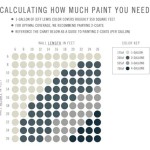Interior Design Short Courses in Europe: A Gateway to Creative Expression
Europe, renowned for its rich history, diverse cultures, and groundbreaking contributions to art and design, presents a compelling landscape for those seeking to delve into the world of interior design. Short courses in interior design offered across the continent provide concentrated, practical learning experiences, catering to a variety of aspirations, from career advancement to personal enrichment. These intensive programs offer a focused approach, enabling individuals to acquire fundamental skills and knowledge within a compressed timeframe.
The availability of diverse course options spanning various design philosophies and specializations makes Europe an attractive destination for aspiring interior designers. Aspiring students will find courses ranging from introductory overviews to specialized training in specific design software or historical movements.
Accessibility and Affordability of Short Courses
One of the primary advantages of pursuing a short course in interior design is the accessibility it offers. Unlike longer, more comprehensive degree programs, short courses often have fewer prerequisites, making them accessible to individuals from diverse educational backgrounds. Many courses welcome individuals with a general interest in design, as well as those seeking to enhance their existing skills. Moreover, the condensed duration of these courses translates to lower overall costs compared to full-time academic programs. This affordability factor makes interior design education accessible to a wider range of individuals, including professionals looking to upskill or pivot their careers, as well as individuals exploring a new passion.
In addition, several institutions offer scholarships and financial aid options to further enhance accessibility. These opportunities can significantly reduce the financial burden, making quality interior design education within reach for aspiring students with limited resources. Location is another factor to consider when evaluating affordability. Cities with a lower cost of living may offer more budget-friendly options than those in major metropolitan areas. A thorough investigation of available accommodation and living expenses is recommended before making a final decision.
Furthermore, the compact nature of short courses allows individuals to maintain current employment or other commitments while pursuing their design education. The flexibility of these programs is a significant advantage for those who cannot commit to full-time study. Weekday evening or weekend classes are common formats, accommodating the schedules of working professionals and other individuals with time constraints.
Core Curriculum and Skill Development
While short courses vary in content and focus, they typically cover the core principles of interior design, providing a solid foundation for further study or practical application. The curriculum usually includes topics such as space planning, color theory, furniture arrangement, lighting design, and material selection. These fundamental elements are essential for creating aesthetically pleasing and functional interior spaces. Students learn how to effectively utilize space, manipulate color palettes, select appropriate furniture pieces, and incorporate lighting to enhance the overall design.
A significant component of most short courses is the development of practical skills. Students often engage in hands-on projects, such as creating mood boards, sketching floor plans, and developing 3D visualizations. These activities allow them to apply the theoretical concepts learned in the classroom to real-world scenarios. The use of industry-standard software, such as AutoCAD, SketchUp, and Revit, is also frequently integrated into the curriculum, equipping students with the technical skills needed to succeed in the field. Familiarity with these programs is highly valued by employers in the interior design industry.
Beyond technical skills, short courses often emphasize the importance of communication and collaboration. Interior designers frequently work in teams, collaborating with architects, contractors, and clients. Students learn how to effectively communicate their ideas, present design proposals, and work collaboratively to achieve project goals. These skills are crucial for building strong client relationships and ensuring the successful execution of design projects.
The curriculum might also incorporate elements of design history and theory, exploring different architectural styles and design movements. This historical context provides students with a deeper understanding of the evolution of interior design and inspires creative thinking. By studying the works of influential designers and architects, students can develop their own unique design sensibilities.
Finally, many courses include workshops on professional practice, covering topics such as marketing, branding, and client management. These sessions provide valuable insights into the business side of interior design, helping students prepare for a career in the field. Learning how to market their services, build a professional portfolio, and manage client expectations is essential for establishing a successful interior design practice.
Specialization and Career Pathways
Short courses in interior design offer various opportunities for specialization, catering to specific interests and career goals. Individuals can choose to focus on areas such as residential design, commercial design, sustainable design, or kitchen and bathroom design. These specialized courses provide in-depth knowledge and skills in a particular niche, allowing students to develop expertise in a specific area of interest.
Residential design courses focus on creating comfortable and aesthetically pleasing living spaces. Students learn how to design and decorate homes, apartments, and other residential properties. Commercial design courses, on the other hand, focus on designing functional and visually appealing spaces for businesses, such as offices, retail stores, and restaurants. Sustainable design courses emphasize environmentally friendly design practices and materials, teaching students how to create spaces that are both beautiful and sustainable. Kitchen and bathroom design courses provide specialized training in the design and renovation of these essential spaces, covering topics such as plumbing, electrical systems, and appliance selection.
Upon completion of a short course, individuals can pursue various career pathways in the interior design industry. Some may choose to work as freelance interior designers, offering their services to individual clients or businesses. Others may seek employment with interior design firms, architectural firms, or construction companies. The specific career path will depend on the individual's interests, skills, and experience. The practical skills and knowledge acquired during the course provide a strong foundation for professional success.
Furthermore, a short course can serve as a stepping stone to further education. Many individuals use these courses to explore their interest in interior design before committing to a longer, more comprehensive degree program. Completing a short course can provide a significant advantage when applying for full-time academic programs, demonstrating a commitment to the field and prior exposure to design principles.
The value of networking opportunities within the European design community should also be considered. Many short courses include guest lectures from industry professionals, site visits to completed projects, and networking events. These opportunities allow students to connect with established designers, learn about current trends, and potentially find internship or job opportunities. Building a professional network is crucial for career advancement in the competitive field of interior design.
In conclusion, interior design short courses in Europe present a valuable opportunity for individuals to gain foundational skills, explore specialized areas, and pursue diverse career pathways within the design industry. The accessibility, affordability, and flexibility of these programs make them an attractive option for anyone seeking to embark on a creative and rewarding career in interior design. A thorough investigation of institutions offering programs aligned to specific interests and professional goals is crucial to ensure a beneficial and enriching educational experience.

Best Interior Design Schools In Europe Claudia Ambrosi

Top Courses Degrees In Design Studies Interior Europe For 2024

4 Best Summer Courses Programs In Interior Design Europe For 2024

Antje Gunther On Linkedin Opentowork

Best Distance Learning Master Degrees In Design Studies Interior Europe For 2024

Trainings Capacity Building Alda Europe

Valmiera Vocational Training Center Introduces The 3d Virtual Cave Only Such Laboratory In Eastern Europe

Cij Europe

International Opportunities
Training Data Samples Of Idssfcd 24 Scientific Diagram
Related Posts








